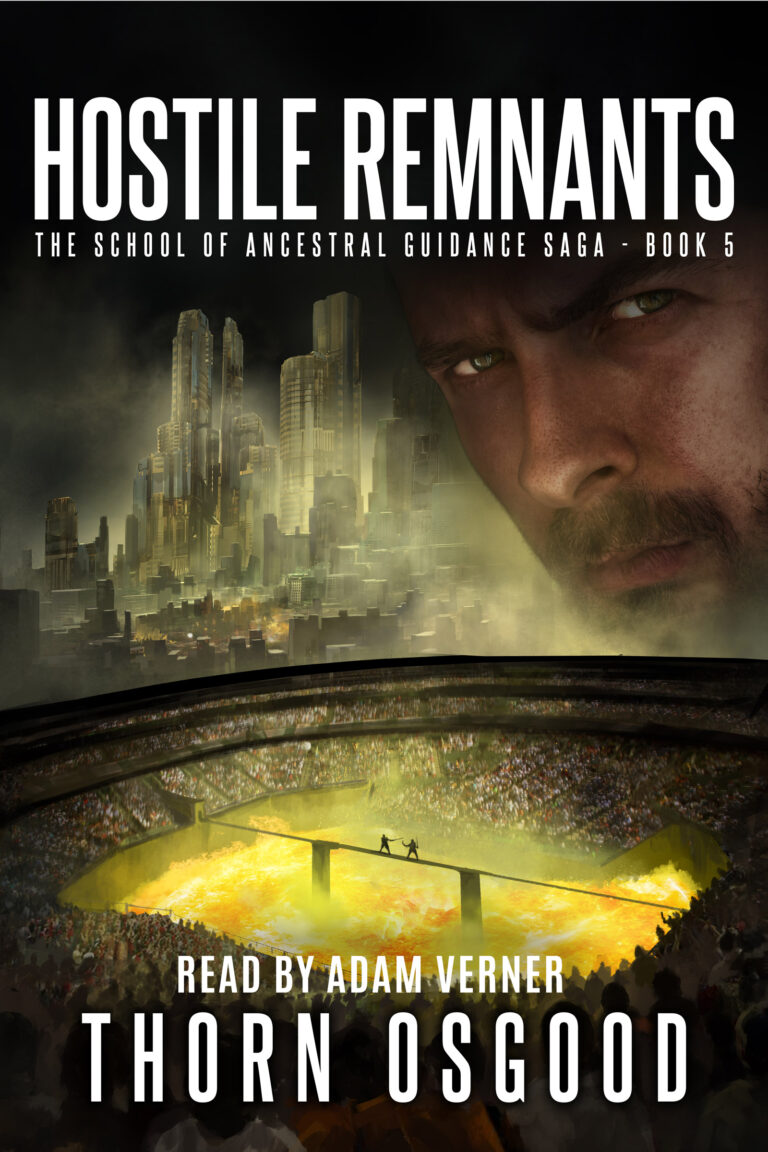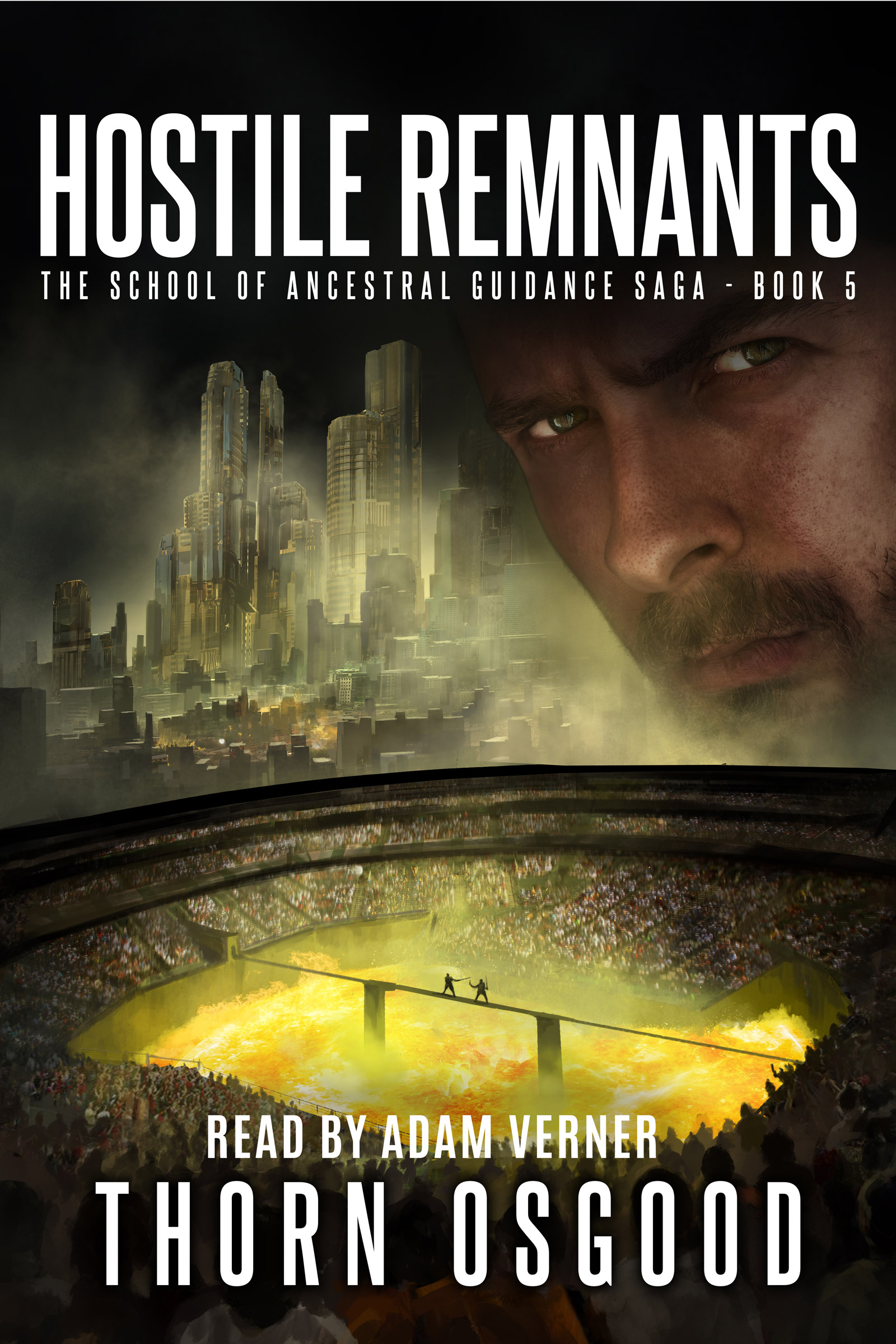The fifth book in Thorn Osgood’s ‘The School of Ancestral Guidance’ series, HOSTILE REMNANTS, is set in a futuristic fantasy world. Lead character and global leader Raekon’s home — a version of earth amongst several interacting realms — is all but unified under the rule of the supreme ruler, with the exception of one small territory. Thistlebriar, which sat behind barriers for over 400 years, is a corner of the planet occupied by citizens who have refused a kind of anti-violence treatment, and as a result have been segmented from the rest of the world’s population. As the last major scar of conflict, Thistlebriar is a political hot potato, one that’s come to the fore after word of the systematic abuse of ‘meeks’, a group of non-violent occupants within the area, leaks out to the wider world.
What’s truly going on in Thistlebriar is a total unknown, and, in a move he’s reluctant to own up to ahead of time, Raekon throws himself into the heart of things when he decides to go into the hostile territory himself, working loosely together with a large group of specialist spies and a plethora of high-tech equipment designed to keep them safe and, if possible, anonymous. After gaining tepid approval from his global assembly, the team breach the barricades and head into an unknown that initially appears relatively mundane. Thistlebriar turns out to be a mixed bag: a society has formed over the years that on the face of it seems to function fairly well. Differing technology, such as flying transport, has developed, too, and fast, allowing those living in ‘exile’ to live relatively comfortably, albeit not on the level of the society they separated from. As Raekon and his team infiltrate the area, they encounter the abuse of meeks, in the form of a lethal kind of obstacle course taking place as large-scale entertainment in boisterous arenas, but struggle to coordinate what to do between themselves and the outside world, after their communications signals encounter problems and it becomes obvious the residents of the isolated district know they are there.
HOSTILE REMNANTS works pretty well as a stand-alone book, though it can take a little time to get used to its interactions, in particular with the characters of a second world that bond with those on the core planet. They are communicated with on a kind of ethereal plane – largely through ‘mimping’, a kind of telepathy, and something that presumably is put in greater context in the earlier books. These connections are key, and we learned that they extend the life of the human characters, as well as contributing advice and providing certain powers along the road, but also that they can bend and break, with all the complexity of a real-world relationship.
At its heart, HOSTILE REMNANTS is a fantasy-meets-battle type of story, but one with subtlety, set in a world that’s intelligent and multi-faceted. The diverse politics within enemy Thistlebriar, led by thoughtful the Elveera, adds a dimension and avoids simplifying the unknown, which is particularly welcome. The complicated political overtones of the books, which exist from page one, also provide plenty of color and shades of complexity that give it a sense of being a complete world, rather than a more simplistic, character-centred story. HOSTILE REMNANTS is probably best read as part of the full series, but impresses throughout with its intrigue, portrayal of varied societies and vibrant pace.
Set in a complex world but with a simple premise, HOSTILE REMNANTS is a colorful and nuanced future-scape fantasy novel, which shines with depth and intrigue, as readers uncover the lost world of a cut off state, and the vibrant world of global leader.
~James Hendicott for IndieReader


